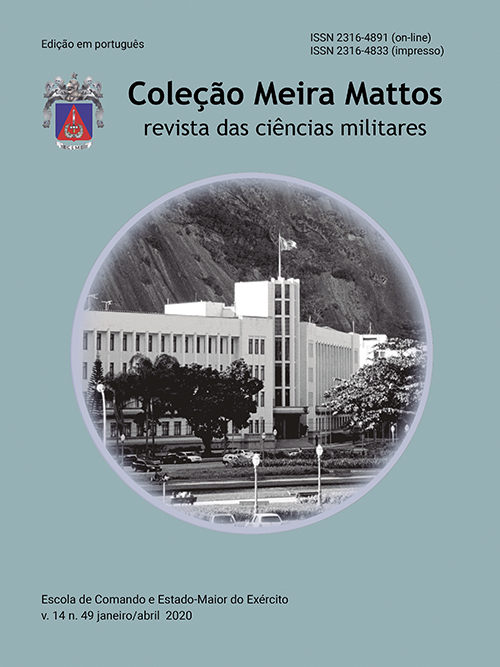Análise de programas de defesa de alto custo e longo prazo estudo de caso do Joint Strike Fighter
##plugins.themes.bootstrap3.article.main##
Resumo
O presente artigo discute o processo de tomada de decisão em aquisição e orçamento de defesa. Embora o orçamento para serviços de defesa e para a defesa em geral se apresente como estável, isso não é verdade para programas específicos. Certos programas revelam a turbulência política subjacente à aquisição de defesa. Este artigo investiga por que os programas diferem em termos de volatilidade orçamentária e quais são os principais fatores que a impulsionam. Para atingir esse objetivo, nosso primeiro tópico é um debate teórico sobre a tomada de decisões, seus principais atores e o processo orçamentário. Posteriormente, o processo orçamentário dos Estados Unidos é descrito. Em seguida, o caso do Joint Strike Fighter é estudado. Complementado pela literatura sobre inovação, o último tópico deste artigo é dedicado à seguinte hipótese: já que o programa F-35 se apresenta como essencialmente estável em termos de aquisição e orçamento, argumenta-se que o que o distingue de programas voláteis é seu consenso de elite e uma Base Industrial de Defesa adequada. Este modelo pretende lançar luz sobre programas de defesa de alto custo e de longo prazo, e sobre sua volatilidade.
Downloads
##plugins.themes.bootstrap3.article.details##

This work is licensed under a Creative Commons Attribution 4.0 International License.
A Coleção Meira Mattos (CMM) está licenciada:
A partir de 2019 sob as condições do Creative Commons (CC BY 4.0)
Até 2018 sob as condições do Creative Commons (CC BY-NC-SA 4.0)
As licenças estão informadas na página de acesso do artigo e detalhadas na página Direitos Autorias desta publicação.
Copyright: O autores são os detentores do Copyright, sem restrições, de seus artigos.
Aviso
Para qualquer reutilização ou distribuição, você deve deixar claro a terceiros os termos da licença a que se encontra submetida esta obra.

